1. Base of Morphology
1.1. What is word?
1.1.1. Word is a basic meaningful unit in a language.
1.2. How to count word in a sentence?
1.2.1. By word tokens
1.2.1.1. count everything that divided by space. For example; I see my dog talking with other dogs. There are 8 tokens in this sentence.
1.2.2. By word types
1.2.2.1. count tokens with the same part of speech, same meaning, and same spelling as one word type For example; I see my dog talking with another dog. There are 7 word types in this sentence.
1.2.3. By lexemes
1.2.3.1. count word types within the same word family as one lexeme For example; I see my dog talking with other dogs. There are 6 lexemes in this sentence.
2. Inflection
2.1. English inflection only attach to noun, pronoun, verb, and adjective.
2.2. What is inflectional bound morpheme?
2.2.1. Inflectional bound morpheme is a bound morpheme that attach to a free morpheme to carry the grammatical meaning.
2.3. What is the use of inflectional bound morpheme?
2.3.1. Inflectional bound morpheme is attached to a word to carry grammatical categories through inflection processes.
2.4. What are the grammatical categories and inflection processes?
2.4.1. Grammatical categories include: Number - Plural number, Singular Person - Third person singular Case - Genitive case, Nominative case, and Accusative case Tense - Present, Past Aspect - Perfective aspect, Progressive aspect Grade - Comparative, Superlative Passive voice
2.4.2. Inflection processes include: Suffixation Internal Stem Change Syncretism or Zero morpheme Suppletion Unmarked
3. Derivation
3.1. What is derivational bound morpheme?
3.1.1. Derivational bound morpheme is a bound morpheme that attach to a free morpheme to change meaning or part of speech. Derivational bound morpheme sometimes change both meaning and part of speech.
3.2. How many type of derivational bound morpheme?
3.2.1. There are 2 types of derivational bound morpheme which are prefixes and suffixes.
3.2.1.1. Words that form by using derivational bound morpheme is called 'derived words'
3.2.1.2. Derivational prefixes include: Number - Unisex ({uni-} + {sex}) Negative - Unstable ({un-} + {stable}) Size - Megaton ({mega-} + {ton}) Locative - Submarine ({sub-} + {marine}) Temporal & Ordinal - Restart ({re-} + {start}) Attitudinal - Cooperate ({co-} + {operate})
3.2.1.3. Derivational suffixes include: N. > N. - Science > Scientist V. > N. - Drive > Driver Adj. > N. - Dark > Darkness Adj. > V. - Deep > Deepen N. > V. - Satan > Satanize N. > Adj. - Beauty > Beautiful Adverb - Peaceful > Peacefully
4. Base of Morphology
4.1. What is morpheme?
4.1.1. Morpheme is the smallest unit in a word that cannot be further divided.
4.2. How many type of morpheme are there?
4.2.1. There are 2 types of morpheme which are free morpheme and bound morpheme.
4.2.1.1. Free morpheme is a meaningful morpheme that can stand alone by itself. For example; Dog, Cat
4.2.1.2. Bound morpheme is a morpheme that must be attached to a free morpheme. For example; Colorful ({color} + {-ful}), Running ({Run} + {-ing})
4.2.1.3. There are 2 types of bound morpheme which are inflectional bound morpheme and derivational bound morpheme.
5. Base of Morphology
5.1. What is Root?
5.1.1. Root is a unit that carries a principal meaning and cannot be further analyzed.
5.1.1.1. For example; immortalizes {im-} + {mortal} + {-ize} + {-s} mortal is a root
5.2. What is Base?
5.2.1. Base is a word before attach to the last bound morpheme.
5.2.1.1. For example; immortalizes {im-} + {mortal} + {-ize} + {-s} immortalize is a base
5.3. What is STEMS?
5.3.1. STEMS is a word before attach to the inflectional bound morpheme.
5.3.1.1. For example; immortalizes {im-} + {mortal} + {-ize} + {-s} immortalize is a STEMS
